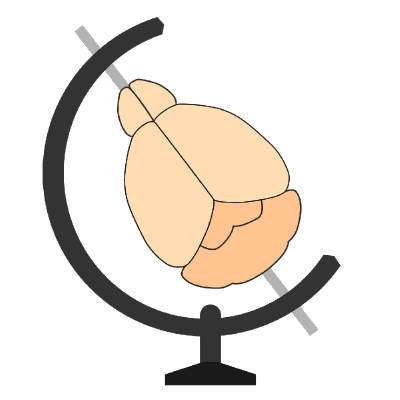Posts by Harry Carey
DeMBA, A 4D atlas representing mouse brain development from adolescence to adulthood
- 15 September 2025
Carey & Kleven et al., 2025 recently published an atlas of postnatal mouse brain development called DeMBA (Developmental Mouse Brain Atlas). This atlas covers the mouse brain in development, from day 4 after birth through to adulthood at day 56 (three months). DeMBA provides the Allen Mouse Brain CCF v3 brain region segmentations. One of the key features of DeMBA is that a researchers can choose day-specific templates corresponding to the developmental age they are studying. Another key feature is that DeMBA is integrated into the BrainGlobe CCF Translator, which allows data to be transformed to any age of the atlas (a total of 53 ages).
An extended and improved CCF for the mouse brain has been added to BrainGlobe
- 06 June 2025
Piluso et al., 2025 recently published an extended and improved Common Coordinate Framework atlas version of the entire mouse brain, called CCFv3BBP or CCFv3a extended. While the previous CCFv2 and CCFv3 atlas versions from the Allen Institute for Brain Science (AIBS) have been widely adopted by the neuroscience community, they retained certain limitations. The updated framework addresses these by incorporating the most rostral and caudal parts of the brain, resulting in a non-truncated main olfactory bulb, cerebellum, and medulla (CCFv3a), features absent or truncated in earlier versions. Additionally, the cerebellum annotation now includes the granular, molecular, and Purkinje cell layers. This new version incorporates a high resolution (10 µm isotropic) Nissl-stained volume precisely aligned to the CCFv3a.
An overview of recently added mouse atlases
- 20 February 2025
Eagle-eyed BrainGlobe enthusiasts will have spotted several new atlases appearing in the BrainGlobe Atlas API in recent weeks. In 2025, we’ve made three new mouse brain atlases newly available through BrainGlobe: The Kim developmental mouse brain atlas (version 1), the Gubra multimodal mouse brain atlas and the Australian mouse brain atlas. Mice are widely used in neuroscience, so it’s no surprise there are many mouse brain atlases. In this blogpost, we describe the newly added atlases in more detail, and suggest potential use cases. This blog covers the new murine atlases only - we have also added the first non-human primate brain atlas to BrainGlobe (and brain atlases for a cat and a cuttlefish are underway)!
An Atlas for the non-human primate Microcebus murinus (grey mouse lemur) has been added to BrainGlobe
- 28 January 2025
Thanks to its small size and its close phylogenetic relation to humans (compared to other model organisms), the grey mouse lemur is a practical choice to study brain evolution and disease. Nadkarni et al. made the first publicly available mouse lemur atlas in 2018. They imaged mouse lemur brains with MRI at 91μm resolution. Thanks to Harry Carey (University of Oslo) it is now accessible from BrainGlobe. In reference to its original authors, the atlas is named nadkarni_mri_mouselemur_91um in the BrainGlobe ecosystem.
